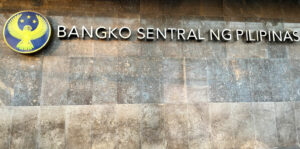TERM DEPOSIT yields went down on Wednesday ahead of the upcoming cut in banks’ reserve requirement ratios (RRR) and expectations of further policy easing by the Bangko Sentral ng Pilipinas (BSP).
The BSP’s term deposit facility (TDF) attracted bids amounting to P239.098 billion on Wednesday, above the P190 billion on the auction block as well as the P175.473 billion in bids seen a week ago for the same offer volume.
Broken down, tenders for the seven-day papers reached P120.556 billion, higher than the P100 billion auctioned off by the central bank. This was also well above the P93.206 billion in bids seen for the same volume of seven-day deposits offered the previous week.
Banks asked for yields ranging from 6.2575% to 6.3%, a narrower band compared with the 6.25% to 6.31% seen a week ago. This caused the average rate of the one-week deposits to drop by 0.82 basis point (bp) to 6.279% from 6.2872% previously.
Meanwhile, bids for the 14-day term deposits amounted to P118.542 billion, higher than the P90-billion offering and the P82.267 billion in tenders for the same offer volume recorded on Sept. 25.
Accepted rates ranged from 6.3% to 6.38%, also slimmer than the 6.298% to 6.41% margin recorded a week ago. With this, the average rate for the two-week deposits fell by 1.36 bps to 6.3601% from the 6.3737% logged in the prior week’s auction of 14-day papers.
The BSP has not auctioned off 28-day term deposits for nearly four years to give way to its weekly offerings of securities with the same tenor.
The term deposits and the 28-day bills are used by the central bank to mop up excess liquidity in the financial system and to better guide market rates.
TDF yields went down ahead of the reduction in banks’ reserve ratios, Rizal Commercial Banking Corp. Chief Economist Michael L. Ricafort said in a Viber message.
The BSP last month announced that it would reduce the RRR for universal and commercial banks and nonbank financial institutions with quasi-banking functions by 250 bps to 7% from 9.5% effective on Oct. 25.
It will also cut the RRR for digital banks by 200 bps to 4%, while the ratio for thrift lenders will be reduced by 100 bps to 1%. Rural and cooperative banks’ RRR will likewise go down by 100 bps to 0%.
Mr. Ricafort added that TDF yields declined following dovish policy signals from the BSP chief.
Mr. Remolona last week said the Monetary Board could slash benchmark interest rates by 50 bps more this year and deliver two more 25-bp cuts at its next two meetings scheduled for Oct. 16 and Dec. 19.
The central bank began its easing cycle in August, cutting its policy rate for the first time in nearly four years by 25 bps to 6.25% from the over 17-year high of 6.5%.
On Monday, Mr. Remolona said that while the BSP has the space to reduce borrowing costs by 50 bps in one meeting, this would only be done in a “hard landing” scenario. — Luisa Maria Jacinta C. Jocson
